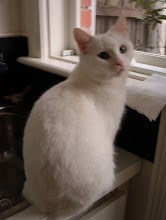Thing 46 is a chance to review the changes made with a number of Things since they were first written up almost a year before this task #46. As the Victorian public libraries Learning 2.0 was happening about the time or just before these updates were being written up, I didn't find that there was all that much that was new for me here. The Things that were updated and/or commented upon were #3 Blogger, #5 Flickr, #8 Bloglines, #9 RSS feeds, #10 Generator, #11 LibraryThing, #12 Rollyo, #13 De.licio.us and #14 Technorati. However, it is useful to have these updates for when we want to roll out the original 23 things to the next group of staff.
Interestingly the majority of these are ones that I still use daily or at least on a regular basis and many the ones that Michael Stephens talked about in his talk last week. These have all become pretty mainstream now, it appears. It's hard to believe it, but it is really so. Tempus fugit.
I was interested in Flickr's partnership with Picnik which I must have passed over (though it should have come up in the Picnik thing), and the fact that LibraryThing offer a facility to scan titles not on their database. That sounds good to me as I find it very frustrating not being able to add new items in Bookjetty (they say next release....). It was also interesting to see the comment about the role of Facebook in social cataloguing. I guess I had noticed it with the various books and reading applications but I hadn't really thought it out.
Monday, March 3, 2008
#45 Go with the flow - Flowcharts & Mindmaps
I was quite looking forward to doing mindmaps and flowcharts, but when it came to the point it took a while to get into it.I signed up with Gliffy for the flowchart example. It provided examples and possibilities for flowcharts, organizational charts, network diagrams, floorplans, SWOTs and technical drawings. It seemed to take me quite a while to get the hang of it and I didn't find it very intuitive. I think the trick would have been to have had a flowchart mapped out and just to input it rather than being free-flowing as I was. However, I did think that it was rather light on instructions and with a the floorplan layout for example I never found out how to rotate an item. I wasn't really sure how much better it was than Word.
For the mindmap example, I tried both Bubbl.us and mindmeister. With Bubbl.us it took me a while to get the hang of how to do it (it hadn't made it clear that I had to sign up before I did anything) and I then got rather a jumble with boxes covering each other as I expanded the brainstorm. Mindmeister, however, was a program I went for immediately. The demonstration video produced on camtasia was pretty clear and the draft prototype clarified remaining queries. I really enjoyed using mindmeister, but think that perhaps I like doing mindmaps in that linear way. In fact I actually like drawing them with marker pens and butcher's paper ;>).
Mindmeister was the standout application for me from this group. The site also provided a forum for online discussion, the facility to publish to web or blog, and the facility to set up notifications if others were working on and amended the mindmap. This could be done through Twitter and a link through Skype allowed people working together on the map to communicate. I liked the way it used third party software such as Skype and Twitter to improve functionality.
And the differences between mindmaps and flowcharts? Well, flow charts provide a logical flow and map out a process, while mindmaps are about brainstorming everything to do with the key issue.
For the mindmap example, I tried both Bubbl.us and mindmeister. With Bubbl.us it took me a while to get the hang of how to do it (it hadn't made it clear that I had to sign up before I did anything) and I then got rather a jumble with boxes covering each other as I expanded the brainstorm. Mindmeister, however, was a program I went for immediately. The demonstration video produced on camtasia was pretty clear and the draft prototype clarified remaining queries. I really enjoyed using mindmeister, but think that perhaps I like doing mindmaps in that linear way. In fact I actually like drawing them with marker pens and butcher's paper ;>).
Mindmeister was the standout application for me from this group. The site also provided a forum for online discussion, the facility to publish to web or blog, and the facility to set up notifications if others were working on and amended the mindmap. This could be done through Twitter and a link through Skype allowed people working together on the map to communicate. I liked the way it used third party software such as Skype and Twitter to improve functionality.
And the differences between mindmaps and flowcharts? Well, flow charts provide a logical flow and map out a process, while mindmaps are about brainstorming everything to do with the key issue.
Subscribe to:
Comments (Atom)




